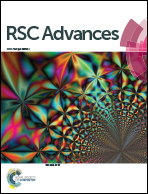Study of charge transfer mechanism and dielectric relaxation of all-inorganic perovskite CsSnCl3
Abstract
In the field of commercialization, lead-free metal halide perovskite materials are becoming more popular these days because of their prospective use in solar cells and also in other optoelectronic applications. In this paper, a non-toxic CsSnCl3 metal halide is successfully synthesized via the slow evaporation solution growth technique. Such systematic characterizations as differential scanning calorimetry (DSC) measurements, dielectric measurements, and variable-temperature structural analyses indicate that CsSnCl3 goes through a reversible phase transformation at T = 391/393 K from the monoclinic to the cubic system. Optical measurements of CsSnCl3 reveal a direct band-gap value of about 3.04 eV. The study of the charge transfer mechanism of CsSnCl3 is carried out based on Elliott's theory. The conduction mechanism in CsSnCl3 is interpreted through the following two approaches: the non-overlapping small polaron tunneling (NSPT) model (monoclinic phase) and the overlapping large polaron tunneling (OLPT) model (cubic phase). Moreover, the high dielectric constant of CsSnCl3 which is associated with a low dielectric loss makes it a possible candidate for energy harvesting devices.



 Please wait while we load your content...
Please wait while we load your content...